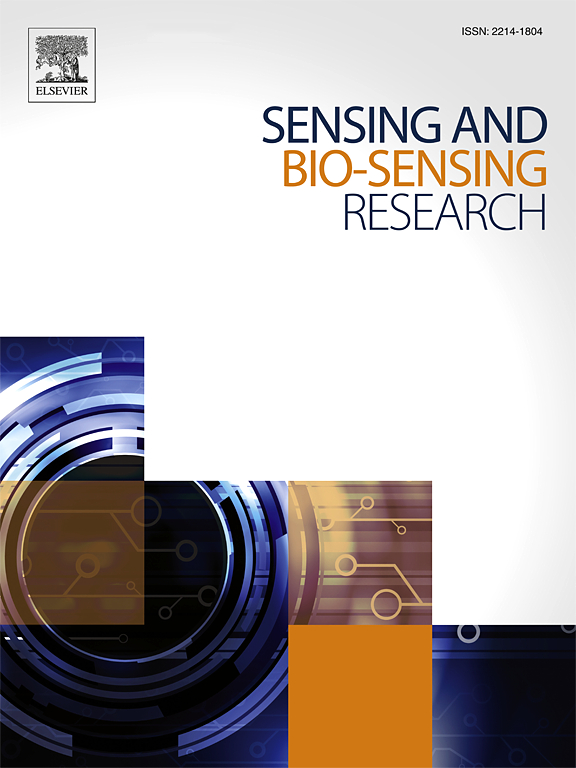TraxVBF: A hybrid transformer-xLSTM framework for EMG signal processing and assistive technology development in rehabilitation
IF 5.4
Q1 CHEMISTRY, ANALYTICAL
引用次数: 0
Abstract
The fact that people with mobility impairments often have great difficulties in performing essential Activities of Daily Living (ADL) shows the importance of developing effective rehabilitation strategies. To address this need, we propose TraxVBF, a multimodal visual biofeedback submodel using surface Electromyography (sEMG) signals and kinematic movement data to exploit muscle synergy patterns. TraxVBF offers innovative real time visual feedback that can be used to enhance neurorehabilitation systems. Pre-processing and extracting muscle synergy patterns is performed by the Hierarchical Fast Alternating Least Squares (Fast-HALS) algorithm, and key movement points are identified with the Modified MediaPipe algorithm to capture temporal and spatial dynamics with precision using TraxVBF, which is driven by Extended Long Short-Term Memory (xLSTM) and Transformer architectures. This allows the model to predict movement trajectories accurately, enabling motor learning and functional recovery of patients through real time feedback without the expensive hardware. The model is shown to significantly improve performance metrics such as Mean Square Error (MSE), Root Mean Square Error (RMSE), and Coefficient of Determination (R2). For healthy participants, TraxVBF-type Base outperforms state of the art models (LSTM and GRU) with an MSE of 0.06 and R2 of 0.89. Practical evaluations with an average R2 of 0.880 for healthy participants and 0.327 for patients demonstrate the model generalizability. These results indicate that TraxVBF may be a useful tool to improve motor learning and rehabilitation, and longer term clinical trials and multi-sensory biofeedback are needed.
TraxVBF:一种用于肌电信号处理和康复辅助技术开发的混合变压器- xlstm框架
行动障碍患者在进行基本的日常生活活动(ADL)时往往有很大的困难,这一事实表明制定有效的康复策略的重要性。为了满足这一需求,我们提出了TraxVBF,这是一种多模态视觉生物反馈子模型,使用表面肌电图(sEMG)信号和运动学运动数据来利用肌肉协同模式。TraxVBF提供创新的实时视觉反馈,可用于增强神经康复系统。采用分层快速交替最小二乘(Fast- hals)算法对肌肉协同模式进行预处理和提取,采用改进的MediaPipe算法识别关键运动点,利用扩展长短期记忆(xLSTM)和Transformer架构驱动的TraxVBF精确捕捉时空动态。这使得模型能够准确地预测运动轨迹,通过实时反馈实现患者的运动学习和功能恢复,而无需昂贵的硬件。该模型被证明可以显著提高性能指标,如均方误差(MSE)、均方根误差(RMSE)和决定系数(R2)。对于健康的参与者,TraxVBF-type Base优于最先进的模型(LSTM和GRU), MSE为0.06,R2为0.89。实际评估结果显示,健康参与者的平均R2为0.880,患者的平均R2为0.327,证明了模型的通用性。这些结果表明TraxVBF可能是改善运动学习和康复的有用工具,需要更长期的临床试验和多感觉生物反馈。
本文章由计算机程序翻译,如有差异,请以英文原文为准。
求助全文
约1分钟内获得全文
求助全文
来源期刊

Sensing and Bio-Sensing Research
Engineering-Electrical and Electronic Engineering
CiteScore
10.70
自引率
3.80%
发文量
68
审稿时长
87 days
期刊介绍:
Sensing and Bio-Sensing Research is an open access journal dedicated to the research, design, development, and application of bio-sensing and sensing technologies. The editors will accept research papers, reviews, field trials, and validation studies that are of significant relevance. These submissions should describe new concepts, enhance understanding of the field, or offer insights into the practical application, manufacturing, and commercialization of bio-sensing and sensing technologies.
The journal covers a wide range of topics, including sensing principles and mechanisms, new materials development for transducers and recognition components, fabrication technology, and various types of sensors such as optical, electrochemical, mass-sensitive, gas, biosensors, and more. It also includes environmental, process control, and biomedical applications, signal processing, chemometrics, optoelectronic, mechanical, thermal, and magnetic sensors, as well as interface electronics. Additionally, it covers sensor systems and applications, µTAS (Micro Total Analysis Systems), development of solid-state devices for transducing physical signals, and analytical devices incorporating biological materials.
 求助内容:
求助内容: 应助结果提醒方式:
应助结果提醒方式:


